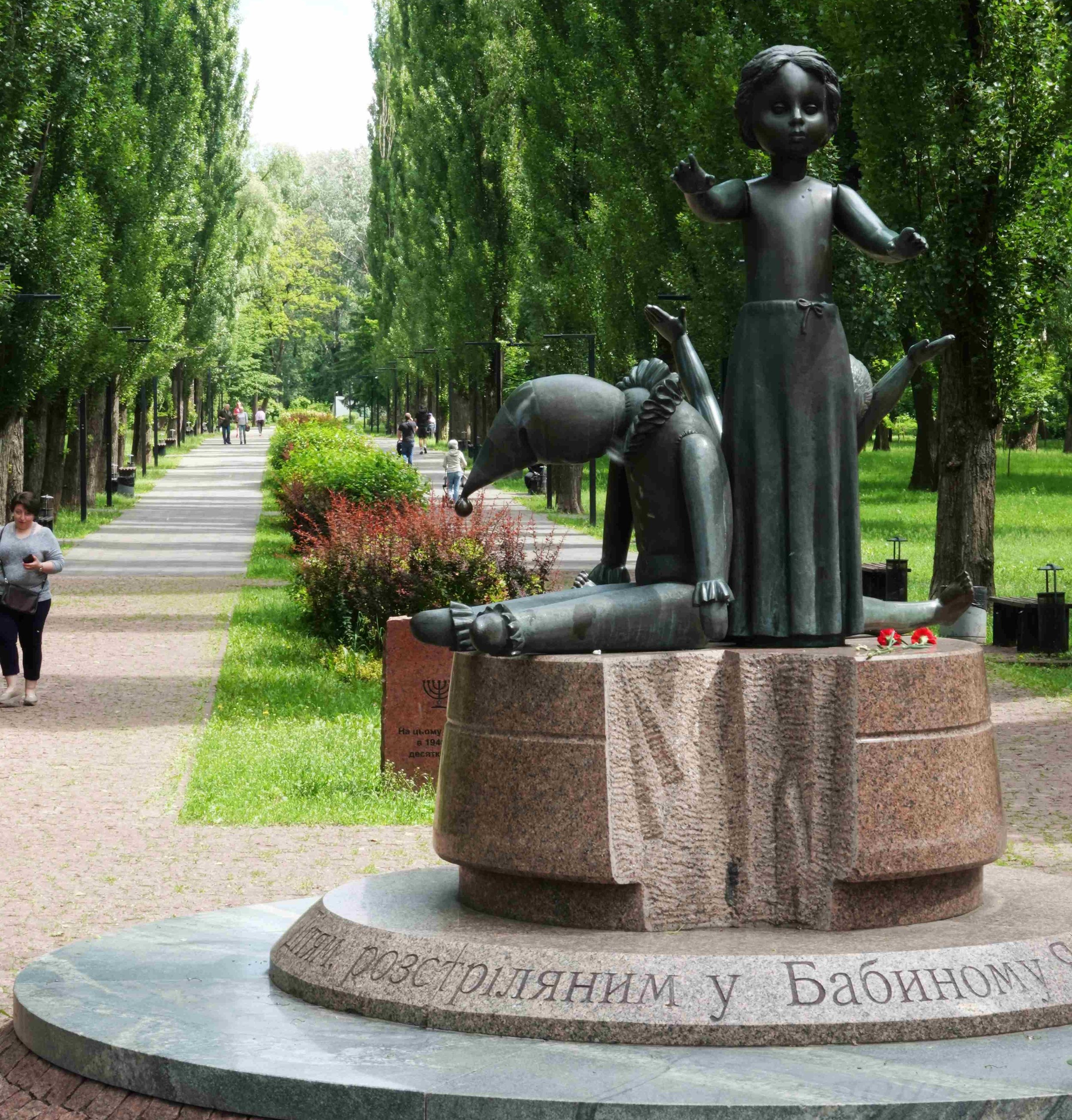Paying my respects at the Babi Yar Holocaust site
During the 1930s, Stalin had (like Putin today) taken care to get rid of any generals with competence, lest they become rivals for power. And then in the week after Hitler invaded in June 1941, Stalin spent a week having a nervous breakdown while only ordering “no retreat”. So millions of Red Army soldiers were killed or captured for no reason whatosever, and Hitler’s Army Group South reached Kyiv (over 1,000 miles from the border) within 3 months.
Side note: It’s no coincidence that both Putin and Stalin — like Ivan the Terrible and Peter the Great — are revered in Russia today. Russians have a peculiar psychotic fondness for leaders who slaughter them. Even my warmest memories as a student in the Soviet Union and working in Russia in the 1990s are coloured by this obvious, omnipresent fact. Putin now expends an average of 1,000 pieces of two-legged meat per day in suicidal frontal assaults in Ukraine, and this does his popularity no harm at all.
At the entrance to Babi Yar
Before the Nazi invasion, Kyiv was home to around 160,000 Jews, about a quarter of Kyiv’s population. After the invasion, many either fled or enlisted, but 60,000 were still there when the Nazis took Kyiv on 19 September 1941. In two days on 29-30 September, about 38,000 Jews were marched to the ravine at Babi Yar on the northern edge of town, forced to undress and hand over all valuables, and shot.
Soviet POWs covering the mass graves after the massacre. The site is now heavily wooded, the ravine very narrow and steep. Nazis and Communists alike worked hard to erase the evidence.
Killings continued here throughout the Nazi occupation, until 1943. In total 100,000 people were killed here — mostly Jews but also Roma (gypsies), Soviet POWs and others. As the Red Army approached, the Nazis tried to cover up the crime. Several hundred people were ordered to dig up the skeletons and burn them. Those who did this were then themselves slaughtered, but a few escaped to testify later.
Throughout the Soviet period, authorities refused to acknowledge the actual crime committed here. Soviet ideology said Hitler’s main mission was killing Communists. Acknowledging Babi Yar as an anti-semitic crime against humanity was a criminal offence.
In 1961, young Soviet poet (and later world-famous dissident) Yevgeny Yevtushenko published a poem about the truth of Babi Yar, a translation of which you can read here. In 1962 Dmitry Shostakovich set the poem to music in his 13th Symphony. Both were reprimanded by the Soviets for “Cosmopolitanism”.
This menorah-shaped memorial was installed on the 50th anniversary of the massacre in 1991
The first Soviet political leader to acknowledge that the murders at Babi Yar were primarily a crime against Jews was Ukraine’s first president, Leonid Kravchuk. In August 1991, on the 50th anniversary of the crime as the Soviet Union was disintegrating, Kravchuk explicitly acknowledged what had happened, and to whom.
The ravine as it looks today - very steep, leafy green, and quiet other than a few birds
As you come out of Dorohozhychi metro station onto the site, you see this Children’s Memorial.
The Communists dug the metro station right through the middle of the site to try to erase it. Now there are memorials on both sides of the station.
Metasequoia trees donated by RememberUs.org in memory of the Jewish children killed here
Profiles of Righteous Among Nations, people who risked their lives to save Jews. None of these people were recognised by Yad Veshem until after the fall of the USSR, because the Soviets suppressed any discussion of the Shoah, its perpetrators, and those who tried to stand in its way.
The Mirror Field. The layout represents the Hebrew Tree of Life, its branches broken by the Shoah. The bullet holes are real, made with the same cailbre of bullets used to kill people here. A continuous drone of different pitches emantes here. Each pitch represents a letter of the Hebrew alphabet, musically reading out the names of the victims. Overlaying this are music by Ravel, Schnittke, and Shostakovich, traditional Yiddish songs, ritual music, and the names and ages of individual victims being read out.
The Mirror Field
Memorial to tens of thousands of Roma (gypsies) killed here
The earliest monument erected at Babi Yar, commemorating Soviet citizens murdered here
This monument at Babi Yar commemorates a separate tragedy, the Kurenivka Mudslide in 1961 — a badly maintained dam burst, sending a massive mudslide into a built-up area very near here and killing about 1,500 people. All news of it was suppressed. These are bricks recovered from the ruins.










